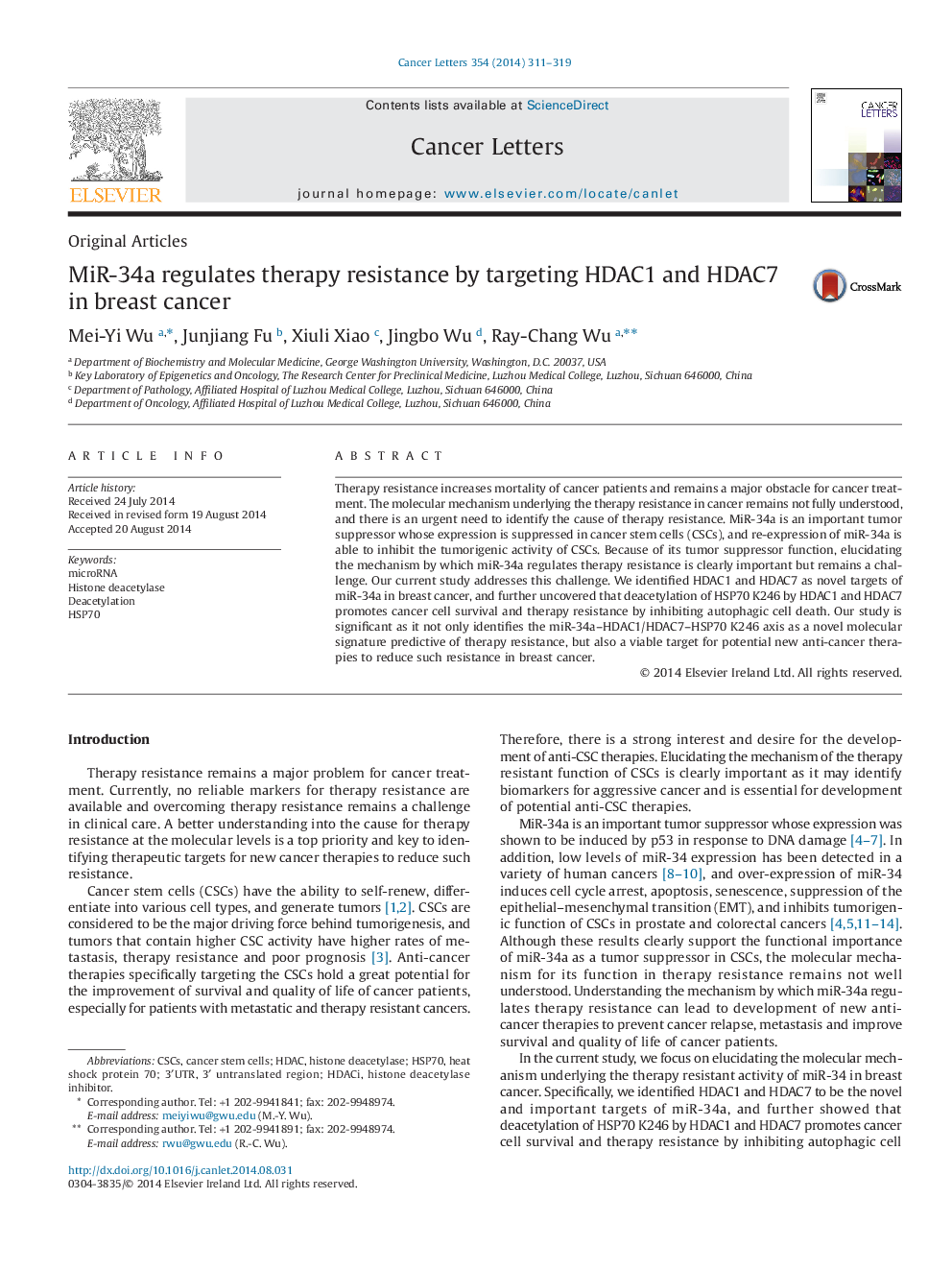| Article ID | Journal | Published Year | Pages | File Type |
|---|---|---|---|---|
| 2112590 | Cancer Letters | 2014 | 9 Pages |
•HDAC1 and HDAC7 are downstream effectors of miR-34a pathway in breast cancer.•Deacetylation of HSP70 K246 by HDAC1 and HDAC7 regulates therapy resistance.•Deacetylation of HSP70 K246 promotes therapy resistance by inhibiting autophagy.•The miR-34a–HDAC1/HDAC7–HSP70 K246 axis is a potential therapy resistant pathway.
Therapy resistance increases mortality of cancer patients and remains a major obstacle for cancer treatment. The molecular mechanism underlying the therapy resistance in cancer remains not fully understood, and there is an urgent need to identify the cause of therapy resistance. MiR-34a is an important tumor suppressor whose expression is suppressed in cancer stem cells (CSCs), and re-expression of miR-34a is able to inhibit the tumorigenic activity of CSCs. Because of its tumor suppressor function, elucidating the mechanism by which miR-34a regulates therapy resistance is clearly important but remains a challenge. Our current study addresses this challenge. We identified HDAC1 and HDAC7 as novel targets of miR-34a in breast cancer, and further uncovered that deacetylation of HSP70 K246 by HDAC1 and HDAC7 promotes cancer cell survival and therapy resistance by inhibiting autophagic cell death. Our study is significant as it not only identifies the miR-34a–HDAC1/HDAC7–HSP70 K246 axis as a novel molecular signature predictive of therapy resistance, but also a viable target for potential new anti-cancer therapies to reduce such resistance in breast cancer.
